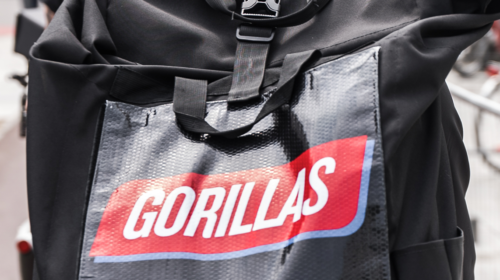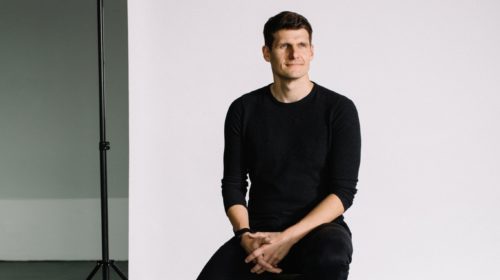
April 8, 2021
agyleOS: Putting People at the Heart of Agility
Journalist Madeleine Pollard chatted to co-founder and CPO Christin Löhr about their journey so far and the importance of agility in uncertain times.
Madeleine: To kick us off, please could you introduce agyleOS?
Christin: agyleOS is a software platform designed to visualise, manage and develop people and agility. What usually happens in an agile transformation is that a company gets external help from an agile coach or a consultancy. Those people come in and set up different rules, processes and workflows, and then they leave and the company has no idea what’s happening, or how to evolve over time. Instead, our software provides a huge database of skills and people, and based on that you can optimise existing teams or create entirely new ones. You can also show your company’s values, visions and missions, so everything is contained in one tool.
MP: What does agility mean to you? What are the trademarks of an agile organisation?
CL: For us, it’s really important to stress that it’s not just about introducing agile methodologies. Agility is about developing your employees, embracing the differences in their culture and age, and utilising the uniqueness of every individual to build powerful teams and to foster collaboration.
Agile organisations have truly self-organised teams that are able to make decisions themselves – that means no micromanagement. Transparency is a huge factor, as is meaningful work and having a sense of purpose. Each team should have a say in the company’s goals and be able to see at any time how their work contributes to its success. It’s also about mindset; you have to be open to change.
“Agility is about developing your employees, embracing the differences in their culture and age, and utilising the uniqueness of every individual to build powerful teams and to foster collaboration.”
MP: You founded agyleOS last September, during a year when flexibility proved more essential than ever. Did the decentralised working conditions of the pandemic play a role in your decision to create agyleOS or was the idea brewing long before it struck?
CL: Both, actually! For six years, I worked as a CPO at enterprise video platform movingimage, which is where I met my agyleOS co-founders. We all worked on the agile transformation of the company and realised that while we were good at defining processes, we didn’t have a way to gather the data together.
Then it became super important because agility is usually an analogue thing; agile companies have these huge whiteboards with lots of Post-its on them, and pieces of paper and pictures. Suddenly everyone had to work remotely and all this information was lost. At movingimage, we switched from office working to home office in a day with no disruptions. This was the approval we needed to see that agile working with a digital platform is the way to go, and that this is how you prepare for the unexpected.
MP: I know that you’re focussed on making company culture more transparent. How does a business keep its culture alive when workplaces are so fragmented?
CL: Check-ins are the most important tool you have as a leader. You have to have more one-on-ones with your employees, not just when there’s a problem. Constellations have changed; some people are busy with homeschooling, for example. So we also have a feature that supports interval working. You can find common slots within the team where everyone is available, and figure out your colleagues’ peak working times. As remote working will probably continue for a while, the biggest challenge is to adapt to the individual needs of each employee, to keep everyone together and not lose people along the way.
“As remote working will probably continue for a while, the biggest challenge is to adapt to the individual needs of each employee, to keep everyone together and not lose people along the way.”
MP: In light of the resurgence of the Black Lives Matter movement, 2020 was also a year that threw workplace diversity into sharp relief and forced some companies to tackle uncomfortable home truths. Diversity is one of your “key agile metrics”: what role does it play in agile transformations and how can you measure it?
CL: Diversity improves not just company culture but also the product itself. Especially in tech, there are many examples of products that are only built for a certain target group because the teams aren’t diverse. I once worked with a development team that was all white males, roughly the same age. It was a really uncomfortable environment. They were good software developers, but they never met their sprint goals, the stuff they delivered was buggy, and meetings were full of arguments. So we decided to mix up the team with female developers, other age groups, and people with different backgrounds and skills. Almost immediately, the whole dynamic changed. People listened more and became more open.
When you make a team more diverse, you’ll see the agility level change. We’re currently working with TU Berlin and diversity experts to come up with concrete KPIs about how we can measure it.
MP: You must be a close-knit group of co-founders, having worked together previously; what are the benefits and challenges of founding a new company with old colleagues?
CL: We know how we react in stressful situations, how conflicts evolve, our strengths and weaknesses. That’s very beneficial because you don’t have to spend the first year of your company trying to figure it out. But that’s also a challenge – we’ve worked together before but never in this constellation, so it’s still a process. The whole remote thing is also new. But we trust each other blindly. We’re all honest and share the same set of values.
“When you make a team more diverse, you’ll see the agility level change.”
MP: Speaking of common values, you’re fairly new to the Factory Berlin family. How have you found your first month?
CL: I love it at Factory. We actually looked at some co-working spaces, but I pushed us to go to Factory because I love the community behind it. We’re building a people and agility tool, so we need to interact with different companies, and share experiences of what works and what doesn’t. It’s really important for me that we aren’t locked up in an office with no-one around us.
In the first month, we came into contact with DINA Elektronik, a traditional German company who are radically changing the way they work. We’ve had fruitful exchanges with them about agility, how they’re restructuring their company, and how we can help with that. We were also invited to present at the Audi Denkwerkstatt, which was very cool.
M: So you’ve you’ve just secured €1mil in funding from an angel investor. What’s on the horizon for agyleOS?
C: We’re focussing on the first version of our product. We’re already onboarding some BETA customers to test the system, and we’re hoping to launch it in the middle of the next quarter and get our first paying customers!

